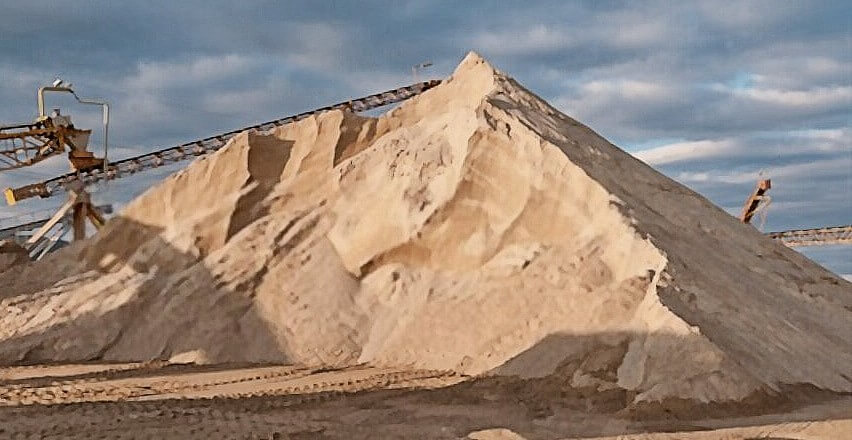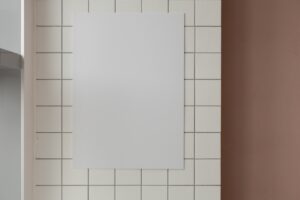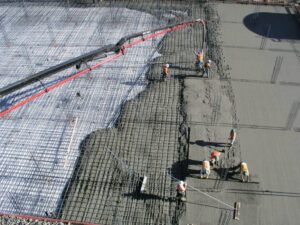With time, the use of manufactured sand (M-Sand) is increasing as an alternative to natural sand. Due to the significant use of construction sand worldwide. And the reduction of environmental stress on the mining of sand from rivers. With the prohibition of sand mining in various states. And the growing demand for river sand for construction projects. Engineers are enforcing to use of manufactured sand in the construction industry. Artificial sand is broadly used in large-scale projects all over the world.
What is Manufactured Sand (M-Sand)?
Manufactured sand (M-Sand) is a replacement for river sand for concrete construction. M- Sand is made by crushing hard granite.
The crushed sand particles are cube-shaped with grounded edges. After cleaning and grading, they can be used as building materials. The size of the M-Sand is less than 4.75mm.
How to Manufacture Sand?
There are four steps involved in the production of M-Sand,
- Feed
- Crushing and screening
- Air Classification
- Sand
1. Feed
In the production of crushed aggregates, up to 30% of the material obtained from the bedrock is reduced to a size of less than 4 mm. Which means that they will be wasted. These stocks are ideal feed for the production of artificial sand.
2. Crushing and screening
Efficient crushing and sieving make the feed material form a uniform consistency, precise shape, and classification. Screening ensures that this material is graded correctly, similar to river sand.
3. Air Classification
Dry (Air) classification reduces the amount of dust and ultrafine powder helps meet strict specifications and improves the quality of the final product.
4. Sand
The final product is manufactured sand, which is of better quality than natural sand so that raw materials that were wasted before have been repaid.
To obtain high-quality final results, each crusher stage needs to be optimized. The final crusher stage to repair trivial crushed products is not a good method.
Facts have proved that installing a vertical axis impactor (VSI) is an effective method for producing small and medium-size (<about 5 mm) cubic (or even round) particles.
But, avoiding a high percentage of fines is a challenge. However, the latest generation of dry screen equipment combined with the latest air classification technology. They allow precise control of the classification curve, including the finest parts.
However, it is important to realize that due to insufficient handling and storage procedures, high-quality aggregates may be reduced.
Why manufactured sand (M-Sand) is used?
Here are some reasons why M-Sand is used
- Manufactured sand is an alternative to river sand. Due to the speedy improvement of the construction industry, the demand for sand has greatly increased,
- Due to the depletion of high-quality river sand for construction, the use of manufactured sand has increased. Another purpose for the use of M-Sand is its availability and transportation costs.
- Since manufactured sand can be crushed from hard granite rocks. it can be easily obtained in nearby places. as a consequence lowering the transportation fee of far-off river sand beds.
- Therefore, the construction cost can be managed by using manufactured sand as an alternative material for construction. Another advantage of using M-type sand is that it can be dust-free. And the size of m-type sand can be easily controlled to meet the required level of a given structure.
Properties of manufactured sand (M-Sand)
- The shape of manufactured sand is cubical,
- Its gradation can be controlled,
- its Particle passing 75 micron – up to 15 percent,
- It can be achieved free from impurities.
- Its grading Zone is II (FM 2.6-3),
- Its Specific gravity is 2.5 to 2.9,
- Water absorption of it is 2 to 4 percent,
- It is relatively sound,
- It has high compressive strength,
- Its flexure bond strength is higher,
General Requirements for M Sand
- All sand particles should have high crushing strength.
- The surface texture of the particles should be smooth.
- The edges of the particles should be grounded.
- The proportion of fine powder below 600 microns in the sand should not be less than 30%.
- There should be no organic impurities
- For crushed sand, the silt in the sand shall not exceed 2%.
- In artificial sand, the allowable limit of fine powder less than 75 microns shall not exceed 15%.
Use of manufactured sand (M-Sand) to improve the natural sand
A limited amount of m sand is used to improve the sand grade, where the initial natural sand is, low in fines, or has a special “open” grade. This method may be successful when low-fine sand is used in low strength cement concrete, especially in high slump mixtures, to prevent segregation and exudation. The limitation is that the hybrid design concept has not changed. The pulverized aggregate is used more or less like any other aggregate. Only using finer classification, must accept the disadvantages of particle shape and often. Thus, it is concluded that in most cases, the incorporation of m sand will result in a decrease in workability and need more water.
Impact of Manufactured sand on Cement Mortar
The effect of M-Sand on the compressive strength of cement mortars with water-cement ratios of 0.5 and 0.55 at ratios of 1:2, 1:3, and 1:6 was studied. The compressive strength of cement mortar that replaces 50% of natural sand with artificial sand shows higher strength.
Impact of Manufactured Sand on Concrete
- At the end of the process, manufactured sand obtained improved performance. M sand has reduced area and better particle packing. This makes a stronger bond with available cement paste. A stronger bond between the ingredients of concrete improves compressive strength.
- With the use of 100 percent manufactured sand, the strength of concrete can increase by up to 7.5 percent.
- Due to less surface area and better grading of m sand improve the workability of concrete.
- The flexural strength of the concrete also can be increased by using m sand.
- Because manufactured sand is processed from a selected grade of granite. It has a balance of physical and chemical properties for concrete. This property of sand m helps the concrete structure to withstand extreme environments. It prevents the corrosion of reinforcing steel by reducing permeability. The effect of moisture ingress increases the durability of concrete structures.
- Manufactured sand is produced by reusable material. This helps to reduce the cost of concrete which impacts the project cost.
Advantages of M-Sand
- Artificial sand can be produced in areas closer to the construction site, thereby reducing transportation costs and ensuring a stable supply.
- According to EN13139, M-Sand sand can be used as aggregate in mortar and concrete mixtures. It can be used as a substitute for natural sand or a mixture with it.
- Land used for quarrying can be reclaimed for commercial/residential use or used for wetland restoration. This can help reduce sand mining in the river bed.
- Manufactured sand does not contain silt and clay particles and has a denser particle accumulation than natural sand. It also has higher bending strength, better wear resistance, higher unit weight, and lower permeability.
Disadvantages of M-Sand
- Compared with natural sand, the texture and angle of m sand may be rougher and become smooth and round due to the natural layering. To achieve the expected workability, this may result in the need for more water and cement, leading to increased costs.
- Due to its production process, artificial sand may contain more fine particles than natural sand. This will affect the strength and workability of the screed or concrete.





